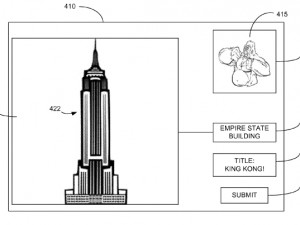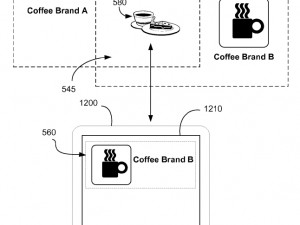
Popular messaging app, SnapChat hopes to expand its ad revenue model by serving its users with object-specific adverts.
The company has filed a patent with the US Patent and Trademark Office for 'object recognition based photo filters' in January, the papers were made public last week.
The app is traditionally an ephemeral messaging service (although this may be changing) that lets users apply responsive filters or image overlays to their photographs.
The patent reveals how this same technology could be used by brands to apply object-specific filters.
It details how if a user takes a photograph and an object in the photograph is recognised as the Empire State Building, photo filters associated with this building will be provided.
"A picture of the Empire State Building may use a King Kong filter that would place the giant ape on the building in the photograph at different perspectives. Therefore, a picture of the south face of the Empire State Building might see King Kong's back, while a picture from the north face might see King Kong's face looking at you," the patent states.
It goes on the say that third party entities like merchants, restaurants and individual users may create their photo filters based on recognition of an object.
"A photograph, including an object recognised as a restaurant, may result in the user being presented with photo filters that overlay a menu of the restaurant.
"Or a photo including an object recognised as a food type may result in the user being presented with photo filters that provide nutritional information," states SnapChat in the patent.
Extrapolating from this, a photo of a pair hiking shoes may trigger an advert for a special at Makro on hiking bags. Or a photo of a low airtime balance on an obscure network could push an advert for the nearest Virgin Mobile shop.
Last year, it was reported six billion videos are seen each day on Snapchat, all viewed on a smartphone.
SnapChat has not officially commented on the patent. Filing for a patent does not mean the company has already developed the technology or that it will ever come to fruition. But it indicates what bases the company thinks it needs to cover for future developments.
This patent has not yet been granted.

Millennials happy to share
The patent also details how the technology needed for the new filters will require the company to see all photos taken by users, know the users' location and send advertisements based on this data.
Some users may not be comfortable with sharing so much personal data.
However, SnapChat has more than 100 million active users, most of whom are aged 13 to 24.
According to recent research by Gallup, millennials (who are currently aged between 19 and 36) are the generation that is most trusting of institutions to safeguard their personal data.
The study also shows millennials are aware of security risks, but not that concerned about them. The report states that younger generations recognise they are living in an age where their personal data is currency.
This means they will gladly accept terms and conditions, which say their information will be shared with a company so that they can be served specific adverts, if the product is enticing enough.
Gearing up to listing?
Snapchat CEO Evan Spiegel said in May last year the company plans to have an initial public offering, but did not specify when this would happen. When the listing does happen, Snapchat will need revenue streams in place to prove to investors the value of the firm.
In May, it raised $1.81 billion in a funding round.
Reuters reported venture capital database PitchBook estimated Snapchat's valuation after the financing at $17.81 billion, up from $16 billion at its most recent financing in February.
Snapchat has faced concerns from big investors familiar with the company that its estimated valuation is not justified because of an uneven revenue stream. Its advertising business, which began last October, is the company's only significant revenue source.
But, provides an attractive platform to reach millennials and hook young consumers on brands.
In 2013, Snapchat turned down a $3 billion acquisition offer from Facebook.
Share